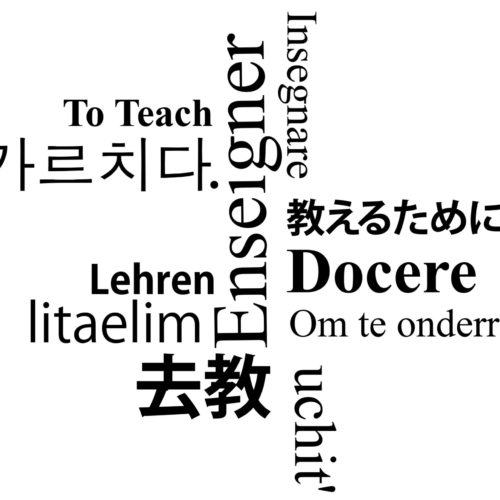Physics Professor Highlights Inclusive Teaching in STEM
“There isn’t one mold of someone who is a physicist. It’s hugely beneficial to see things from people with different viewpoints and new ideas. That’s how progress is made,” said Kathryn Mairin Hynes, Ph.D., Senior Lecturer in the Department of Physics at Washington University in St. Louis. Dr. Hynes teaches introductory physics courses and researches students’ conceptual understanding, problem-solving methods, and attitudes toward the field to enhance physics classes and labs at the university. She is author on several papers regarding physics education including one that demonstrates how a scalable interactive curriculum can benefit physics students in large classes at Wash U.
Dr. Hynes also spearheads several initiatives at the university that focus on inclusive teaching. She leads the Women in Physics Mentor Program at the university and is chair of the physics department’s Diversity Committee.
Dr. Hynes earned a B.S. in physics and history from Saint Louis University. She then received her Ph.D. from Washington University in St. Louis, where she completed experimental work on stellar nucleosynthesis. After graduate school, Dr. Hynes started her position as a lecturer in the Physics Department at Washington University, with the role of Introductory Physics Coordinator.
In an interview with the Teaching Center, Dr. Hynes highlighted the importance of inclusive teaching. She also discussed how a combination of pedagogical methods can benefit physics education.
How did you become interested in physics?
When I was fairly young, I read A Wrinkle in Time by Madeleine L’Engle. It talked about space and astrophysics. I looked it up and thought, this sounds great, there’s a job where you can study stars and black holes. Ever since then I was interested in astrophysics, which is what I studied for my PhD. I think it’s amazing that as physicists, we can figure out how complicated things work.
What inspired you to become a teacher?
I hadn’t really thought about it until my PhD advisor suggested that he thought I would make a good teacher. One of the things I especially loved about research was talking to people and sharing ideas, and I didn’t enjoy literally sitting in a dark room by myself. I realized that teaching involved interaction with people and sharing. It’s a fun challenge to convey things that are interesting and exciting to me and try to get students excited about them, too. I don’t expect everyone to be a physics major but if I have a student that comes away thinking, wow, there’s really interesting and I want to learn more, that’s gratifying. It’s why I love doing this.
Tell me a little bit more about your research on physics education. Which pedagogical methods have you found the most effective?
We’ve done a lot of research trying to figure out two things: One is how to get students to learn more effectively, and the other is how to do it more effectively as educators. We started by looking at what students get out of a lecture-based class versus one with active learning techniques. We found there are good things about both methods. It led us to design the current incarnation of Intro to Physics. We emphasize both pedagogical pieces in class, homework assignments, and we’ve changed what we test on exams.
Our old exams used to be exclusively long, quantitative problems comparable to the most challenging homework problems. But in class and homework, we have other, shorter problems and content questions. Students rightly said, why aren’t the latter type of problems on exams? Now we have shorter multiple-choice questions and some of the longer, quantitative questions to better reflect all the pieces of what we taught.
How have collaborations on campus benefitted your education study?
Partnering with other disciplines has been helpful in finding techniques to convey content that we know really well in a coherent, engaging way for students. For example, we’ve partnered with cognitive science researchers on campus to learn how people learn. As learners, there are things that are difficult, but being transparent and saying why you’re doing it as an instructor is important.
What is your experience as one of the only females in the physics department at Washington University?
Anytime you stand out, it helps to have a community of people who are like you and allies. I’ve tried to build more of a community of female scientists at Wash U. I’m the faculty head of the Women in Physics Mentor program, which I started with a former student this year. It pairs early students with juniors, seniors, and graduate students. They get a gift card to go get coffee, and they interact and ask questions. It’s a great way to get people together who might not cross paths otherwise.
The downside to being one of the only females in the department is, it’s a little lonely. It’s exciting that we now have two women teaching this year. I’ve had great, supportive colleagues, but any time you stand out it can feel isolating at times.
How can educators improve experiences for women and minorities in STEM?
I think it’s important to focus on how to be inclusive as a whole. Physics is historically very homogenous. It’s important to bring in diversity. It’s something we’re looking at in our physics education study. We want students to be motivated and comfortable in class. You can do this in multiple ways including tying in something they’re interested in and showing how it relates to physics, giving varied examples, and giving people a little time to think to encourage more participation.
There isn’t one mold of someone who is a physicist. It’s hugely beneficial to see things from people with different viewpoints and new ideas. That’s how progress is made. Part of our job as educators is to make sure students have a sense of belonging and the tools and confidence to succeed.
Who are some of your favorite teachers and why?
One person who I didn’t have as a teacher but was a huge influence was my graduate school advisor at Wash U, Tom Bernatowicz (Professor Emeritus in the Department of Physics at Washington University in St. Louis). He was instrumental in the Intro to Physics program. A lot of ideas I have about approaching that course come from him, including why it’s a privilege to teach a wide group of students and showing them why physics is exciting.
When I was in undergrad, I double majored in physics and history. I have a soft spot for the humanities. In high school, I had a history teacher who wrote me letters of recommendation for college. He made me see that it’s beneficial to pursue different things. It was an important message for me to hear, that you don’t have to do one thing or the other. I encourage my students to follow their own path.
What advice do you have for aspiring educators?
Make sure you’re excited about what you’re teaching, because if you’re not, there’s no way you’re going to get your students excited about it. Also, try as hard as you can to remember what it’s like to encounter new, challenging material. I always appreciated when teachers recognized that.
Remind students that it’s the process of working through a problem that’s important. You don’t have to know everything right now. Help students see why they’re doing what they’re doing, and why it matters beyond just a grade at the end of the semester. Modeling that behavior for students is important.





